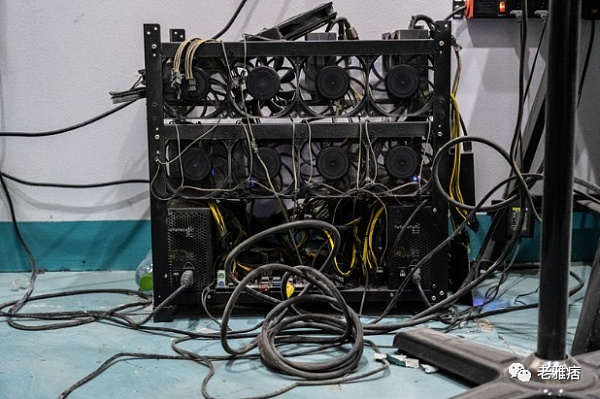Railway staff will strike on Tuesday, Thursday and Saturday with a 24-hour walkout also planned on the London Underground
:quality(70)/cloudfront-eu-central-1.images.arcpublishing.com/thenational/QQZM7EXKWTIBOPGIOXGCFR36PQ.jpg)
Waterloo Station in central London. Services on more than half of the UK's rail network may be suspended next week during three days of rail strikes.
Soraya Ebrahimi
Jun 19, 2022
As strikes on the railways and London Underground from Tuesday look set to cause widespread travel disruption, union leaders have accused the UK government of “inflaming” tensions over the dispute.
There will be cancellations and heavily reduced services from Tuesday as workers stage the biggest strike in the industry for more than 30 years in a row over pay, jobs and conditions.
Members of the Rail, Maritime and Transport union (RMT) at public body Network Rail and 13 train operators will strike on Tuesday, Thursday and Saturday, with only about one in five trains running and disruption to services on days following the action.
READ MORE
The RMT and Unite are also staging a 24-hour walkout on London Underground which will cause disruption to services.
The union body TUC is calling on the government to adopt a positive role in the dispute, saying it was “inflaming tensions” with comments such as threatening to “revoke” workers’ legal rights.
The TUC said rail workers in Wales have reached agreements with operators on pay and job protections, while in Scotland there are “meaningful negotiations” taking place.
The TUC said ministers in Westminster were insisting on imposing cuts and planning to change the law so that employers can draft in agency workers in during industrial action.
“The government has the power to help end this dispute, but rather than working in good faith to find a negotiated settlement, ministers are inflaming tensions and trying to pitch worker against worker,” TUC general secretary Frances O’Grady said.
Ms O’Grady said no one takes strike action lightly but that rail staff have been left with “no other option”.
“Many rail staff who will be hit hardest — such as caterers and cleaners — are on low and average earnings. It’s insulting to ask them to take yet another real-terms pay cut when rail companies took £500 million ($611m) in profits during the pandemic.
“If these cuts go ahead, thousands of safety-critical and frontline jobs will be lost, with train services at risk, too.
“We need a better vision for the future of rail than commuters packed on unsafe trains like sardines,” she said.
:quality(70)/cloudfront-eu-central-1.images.arcpublishing.com/thenational/TEVDBHJYYXHLRRPQNIR6DKRW6E.jpg)
Picture taken with permission from the Twitter feed of Diego Garcia Rodriguez of queues to enter security at London's Gatwick Airport on Tuesday. PA
“Strikes should always be the last resort, not the first, so it is hugely disappointing and premature that the RMT is going ahead with industrial action,” a Department for Transport representative.
“The government committed £16 billion — or £600 per household — to keep our railways running throughout the pandemic while ensuring not a single worker lost their job.
“The railway is still on life support, with passenger numbers 25 per cent down and anything that drives away even more of them risks killing services and jobs.
“Train travel for millions more people is now a choice, not a necessity. Strikes stop our customers choosing rail and they might never return.”
Commuters face travel disruption as London Underground goes on strike — video
Commuters face travel chaos as London Underground goes on strike
Transport Secretary Grant Shapps said the RMT had been “gunning” for industrial action for weeks and accused it of “punishing” millions of “innocent people” who will be affected by the strikes.
“Of course, it is a reality that if we can’t get these railways modernised, if we can’t get the kind of efficiency that will mean that they can work on behalf of the travelling public, then of course it is jeopardising the future of the railway itself,” he told the Sophy Ridge on Sunday programme on Sky.
A representative of the Rail Delivery Group industry body said it was aware of the cost-of-living pressures being felt by workers and their families.
“Every business wants to support their staff and the railway is no exception.
“But, as an industry we have to change our ways of working and improve productivity to help pay our own way — the alternatives of asking taxpayers to shoulder the burden or passengers to pay higher fares when they too are feeling the pinch simply isn’t fair,” the representative said.
The strikes will affect a number of events including the Glastonbury music and arts festival in western England, and London concerts by Elton John and the Rolling Stones, as well as school exams.
Updated: June 19, 2022
Sun, June 19, 2022
By Elizabeth Piper
LONDON, June 19 (Reuters) - British transport secretary Grant Shapps has condemned planned rail strikes as a "huge mistake" that will stop people attending hospital appointments, sitting school exams or getting to work.
The action this week comes as British airports experience chaotic delays and last-minute cancellations and as many Britons also face a huge backlog at the office which processes passports.
It also highlights pressures on British households, which are experiencing the biggest cost-of-living squeeze since the 1950s, with rail workers saying they are facing cuts in the value of their pay at a time when inflation is spiralling.
Responding to criticism that the government should step in to try to force an agreement and prevent a strike, Shapps said on Sunday it was for the employers to negotiate with their workers.
"I think this is a huge mistake, unfortunately the unions ... have been gunning for this strike throughout," Shapps told Sky News. "It is disastrous, and it's no way to behave on the railway."
More than 50,000 rail workers will strike on June 21, 23 and 25 in a dispute over pay freezes and job cuts in what the Rail, Maritime and Transport Workers (RMT) union has billed the biggest industrial action in the sector in more than 30 years.
Mick Lynch, general secretary of the RMT, said his union was just looking for a pay rise that reflects the cost of living, but said train operators were making offers "nowhere near that" and he feared thousands would lose their jobs.
The main opposition Labour Party said the government should get involved in the negotiations to try to find a solution.
"This is a government that in 2019 came to power on a promise to level up," Labour's policy chief on tackling regional inequalities, Lisa Nandy, said, referring to a stated objective to reduce regional economic imbalances.
"Instead, what they have presided over is absolute chaos, chaos at the ports, chaos on the railways, chaos at airports, chaos everywhere you go, and that is because this is a government that is not doing its job." (Reporting by Elizabeth Piper; Editing by Louise Heavens and David Holmes)






















